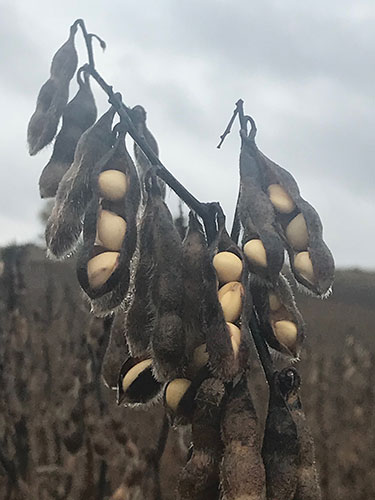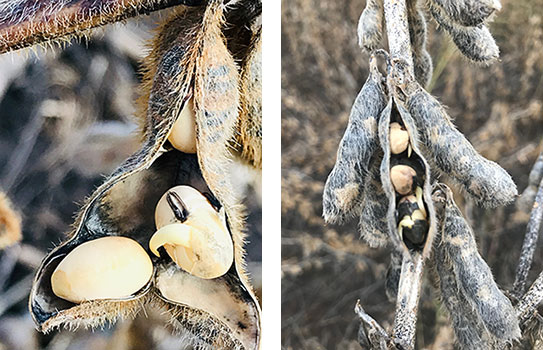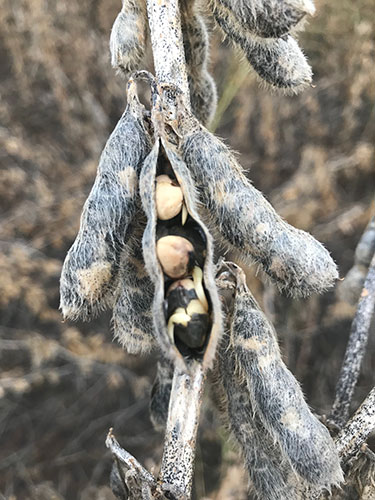10/18/2024
Soybean Pod Splitting and Seed Sprouting

Crop Focus
Written by Mark Jeschke, Ph.D., Pioneer Agronomy Manager
Key Points
- Excessive rainfall late in the season can allow water to soak through the pods of mature soybeans and cause the seeds to swell inside the pods.
- Soybeans that experienced drought stress earlier in the season can have an elevated risk of pod splitting due to smaller and weaker pods.
- If soybean seeds swell to above 50% moisture and temperatures are above 50ºF, they may begin to germinate in the pods.
The foregoing is provided for informational use only. Please contact your Pioneer sales professional for information and suggestions specific to your operation. Product performance is variable and depends on many factors such as moisture and heat stress, soil type, management practices and environmental stress as well as disease and pest pressures. Individual results may vary. Pioneer® brand products are provided subject to the terms and conditions of purchase which are part of the labeling and purchase documents.



